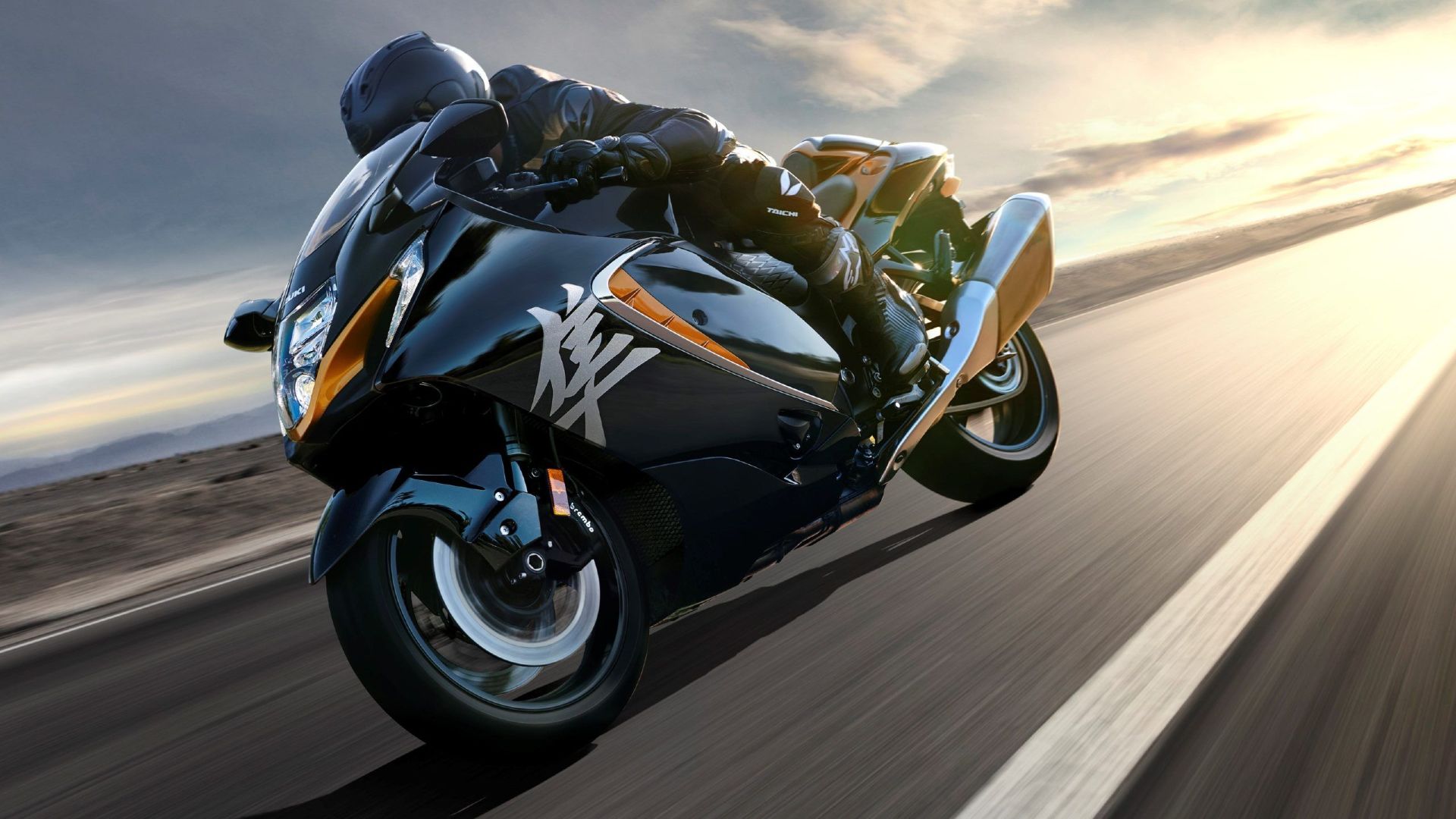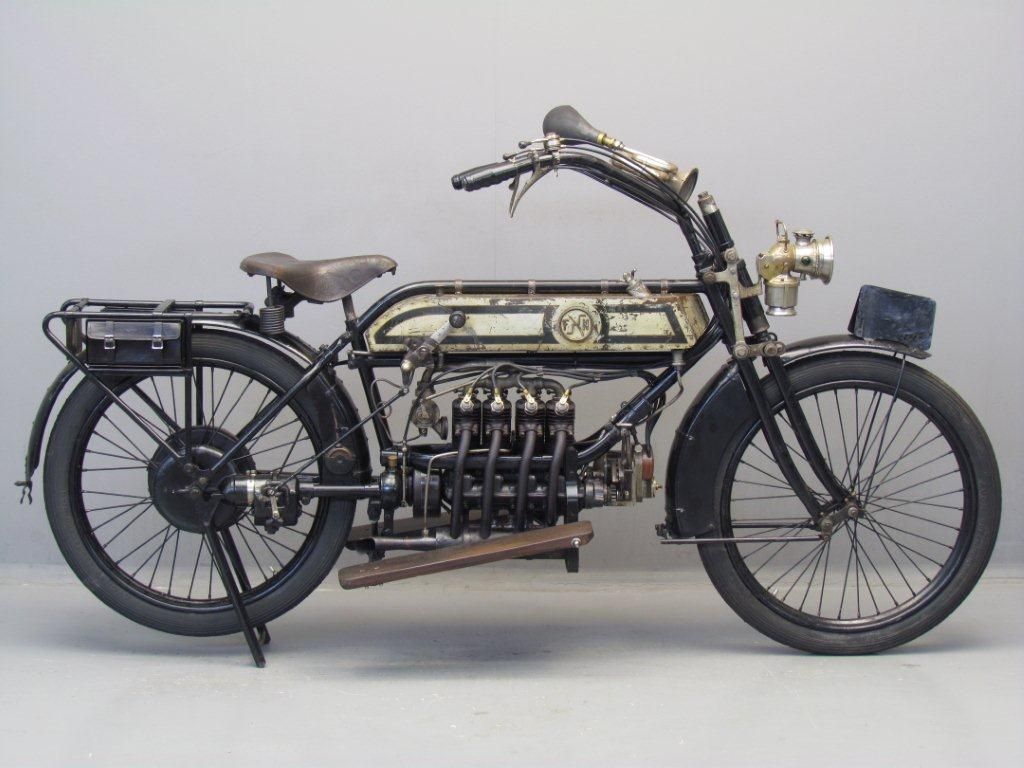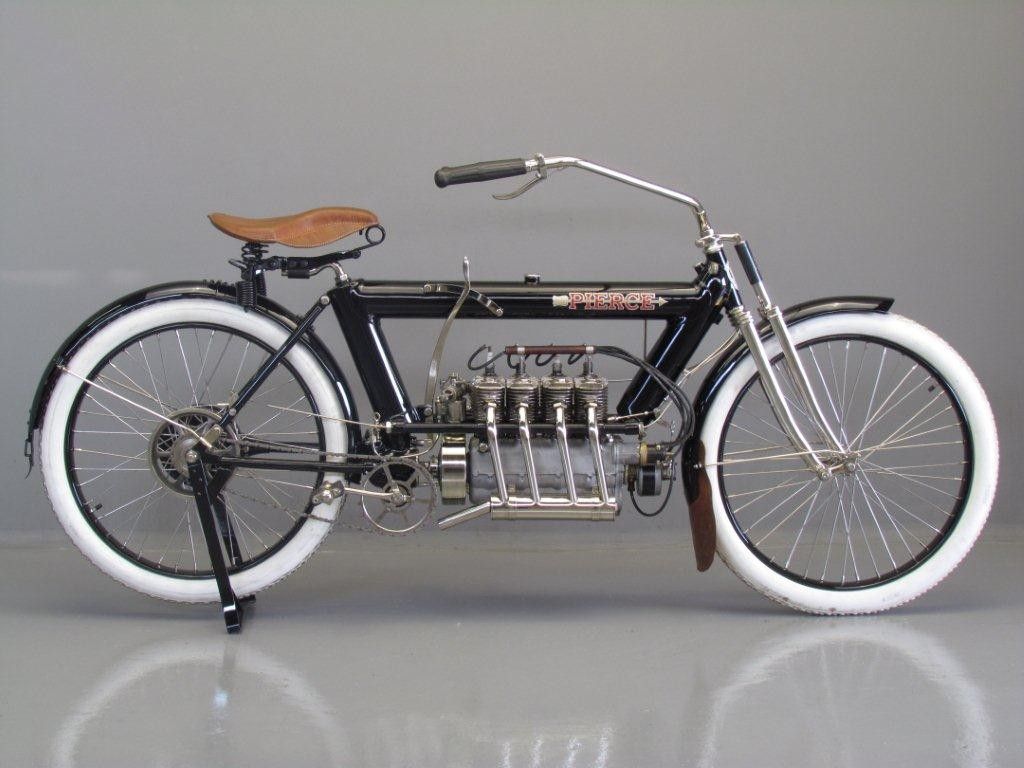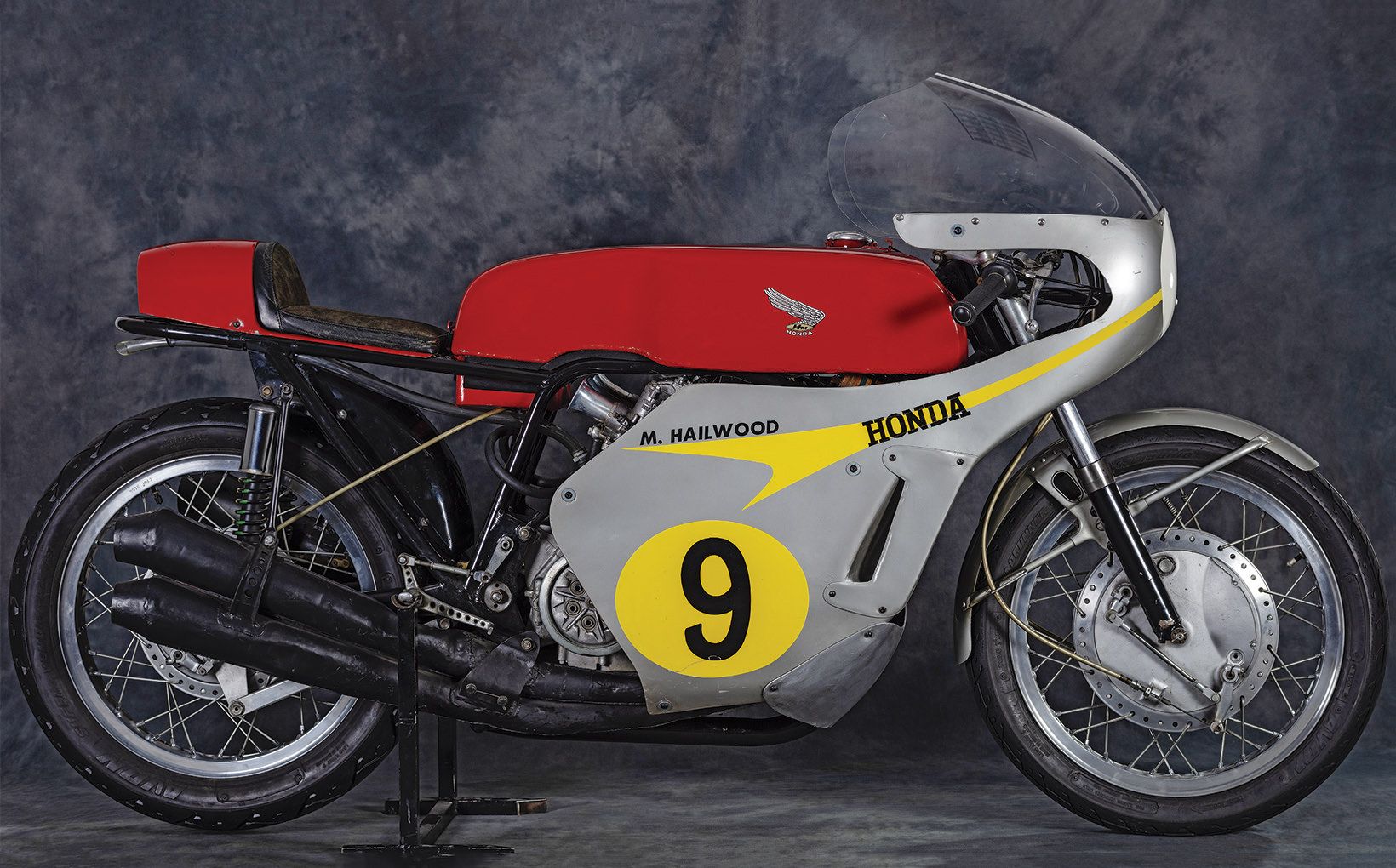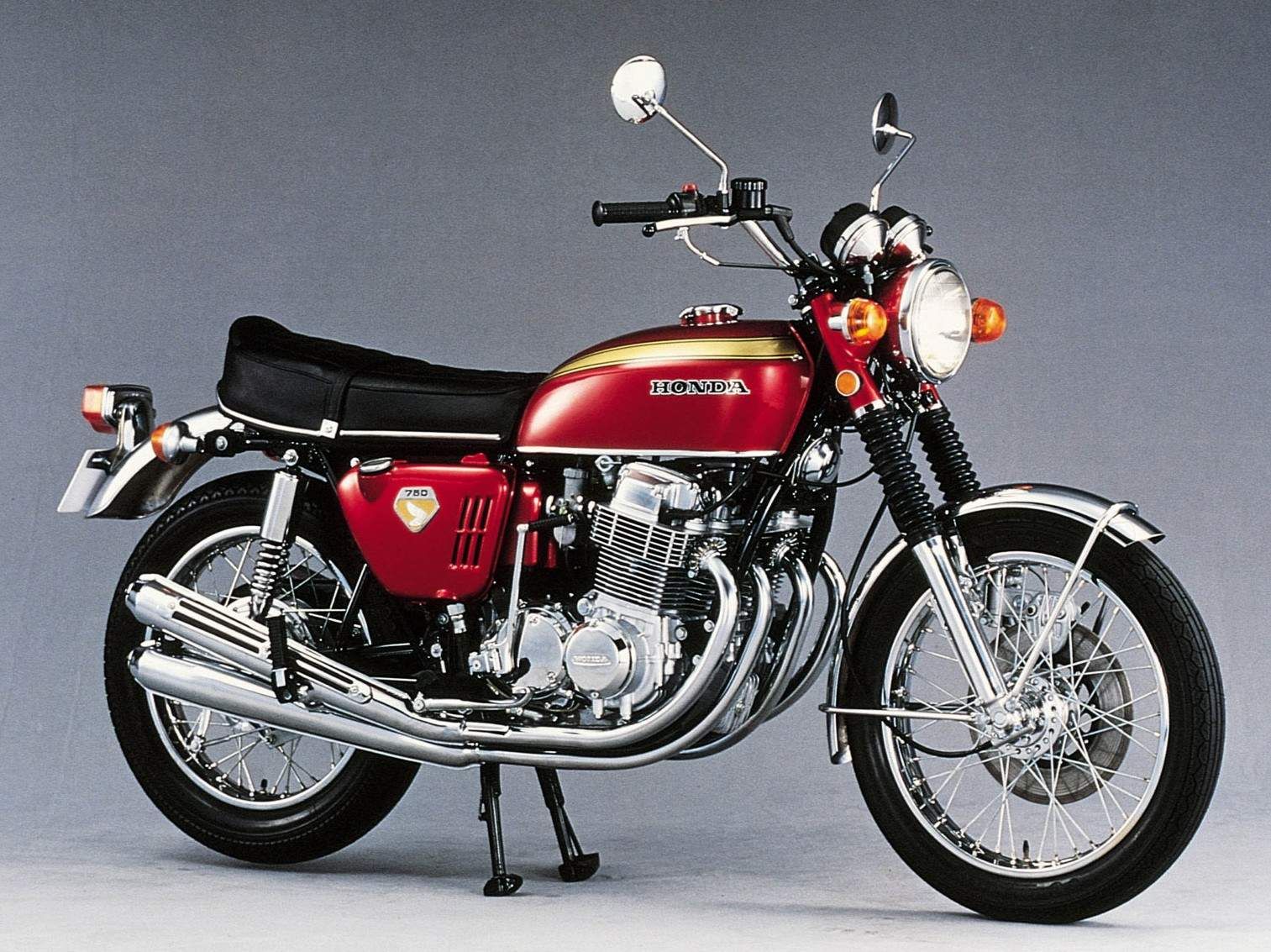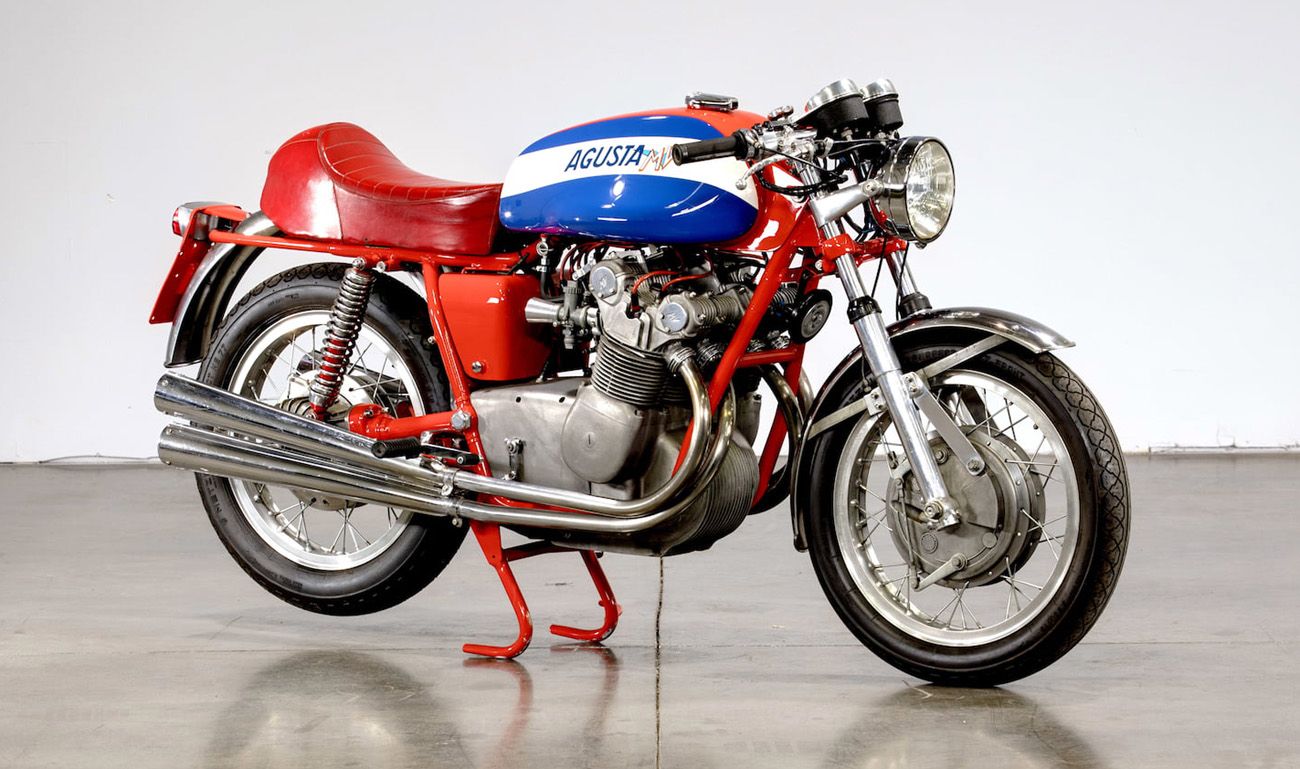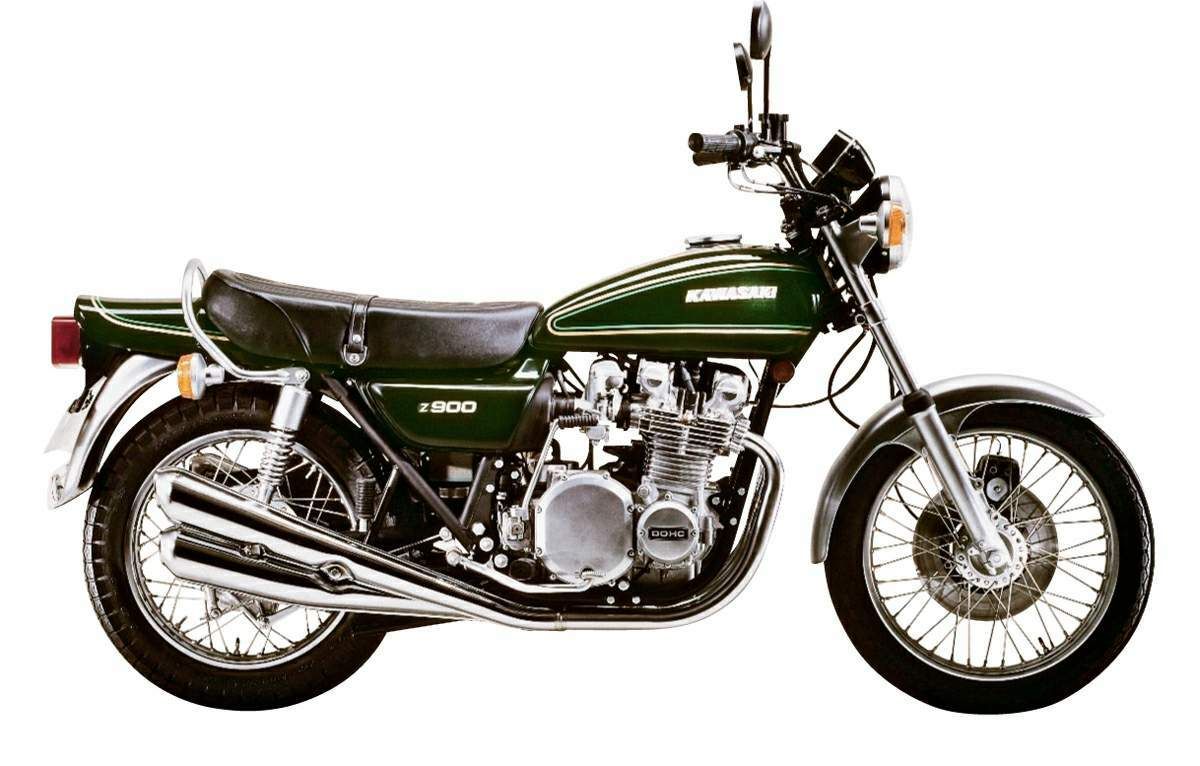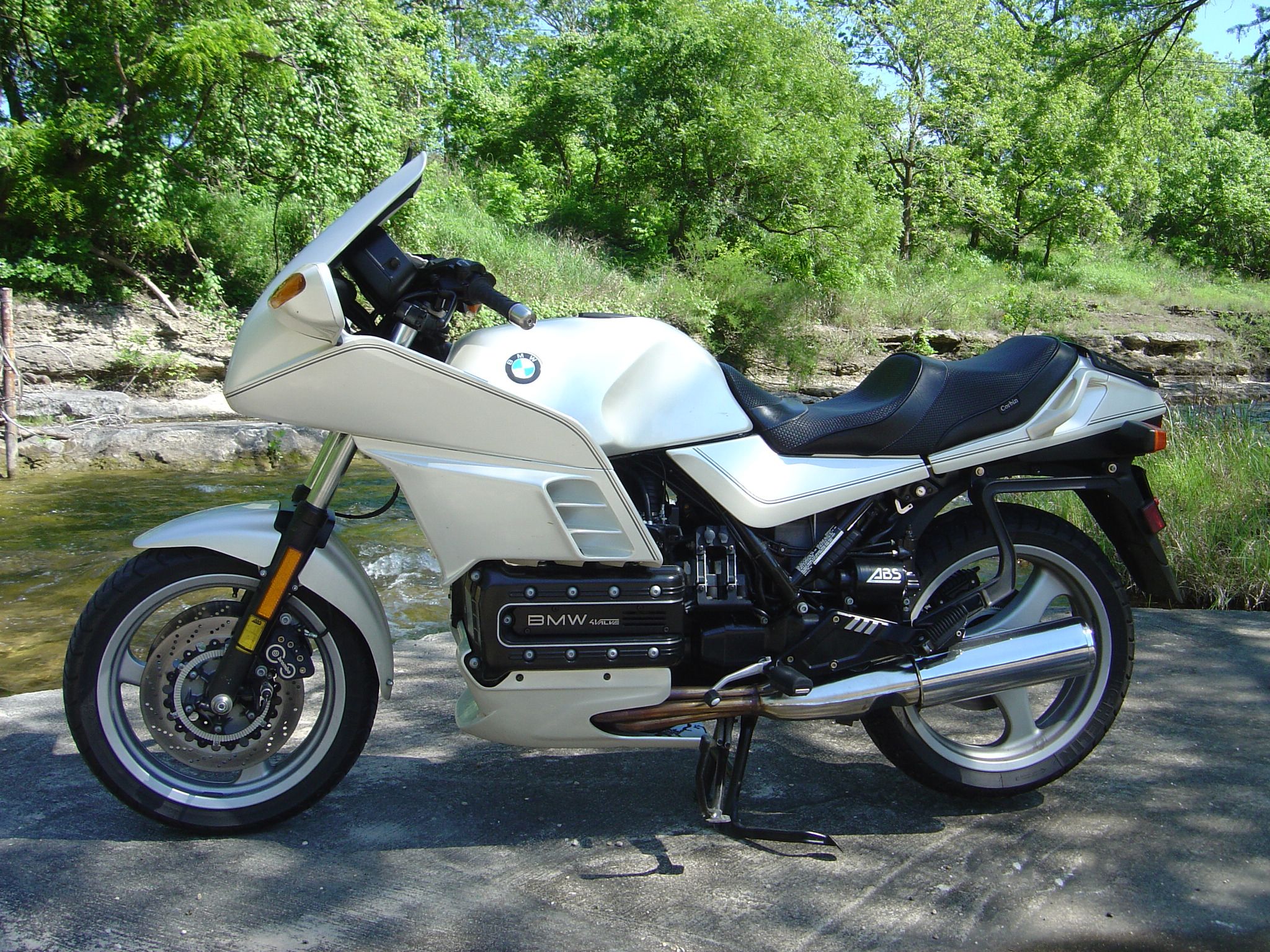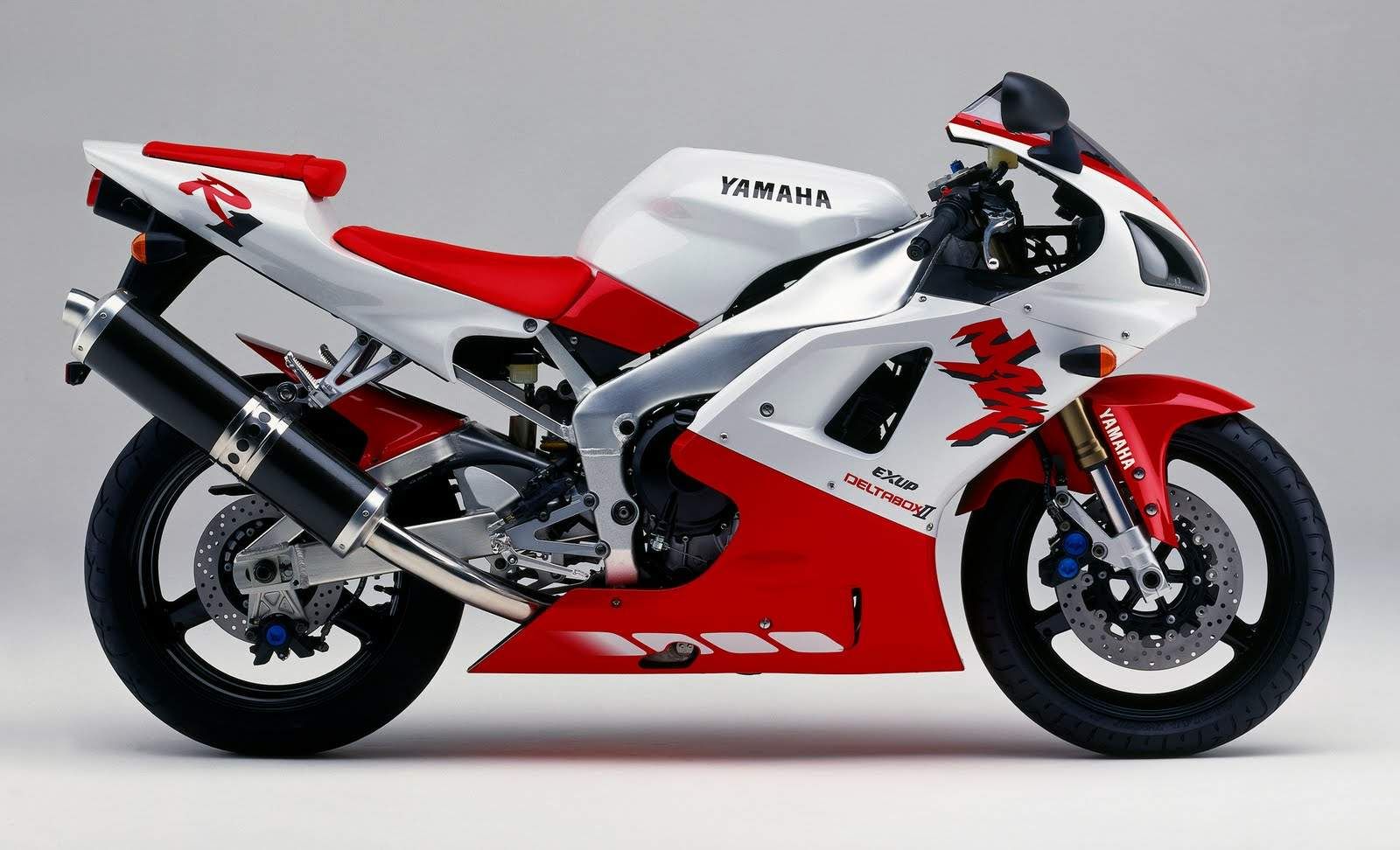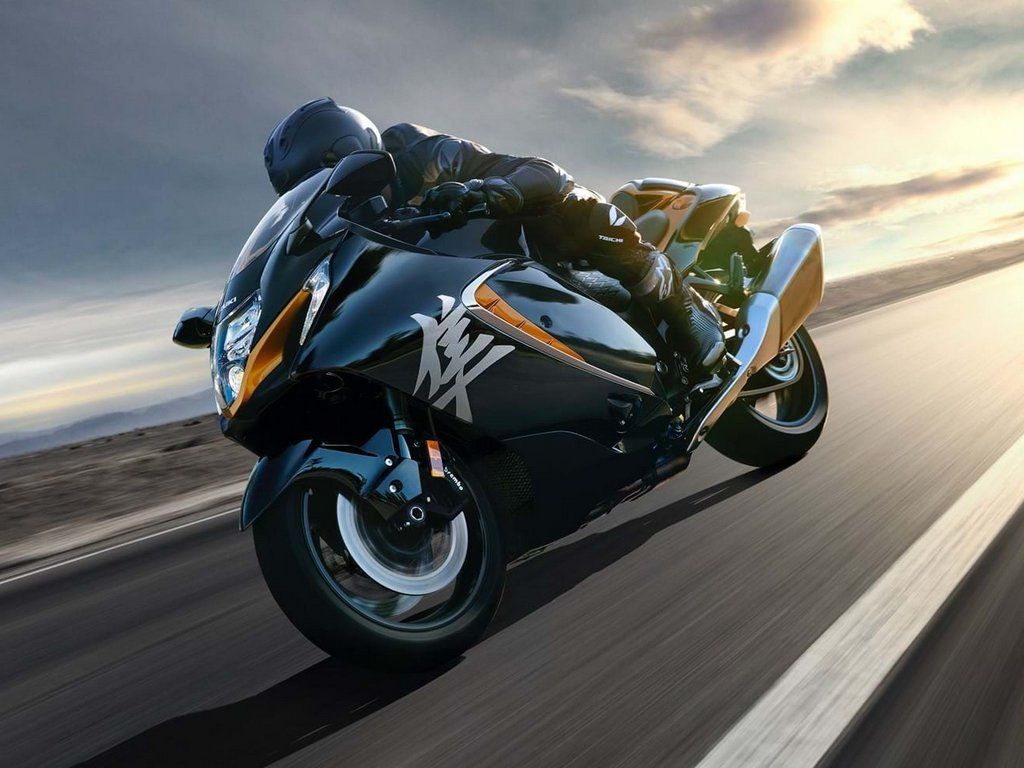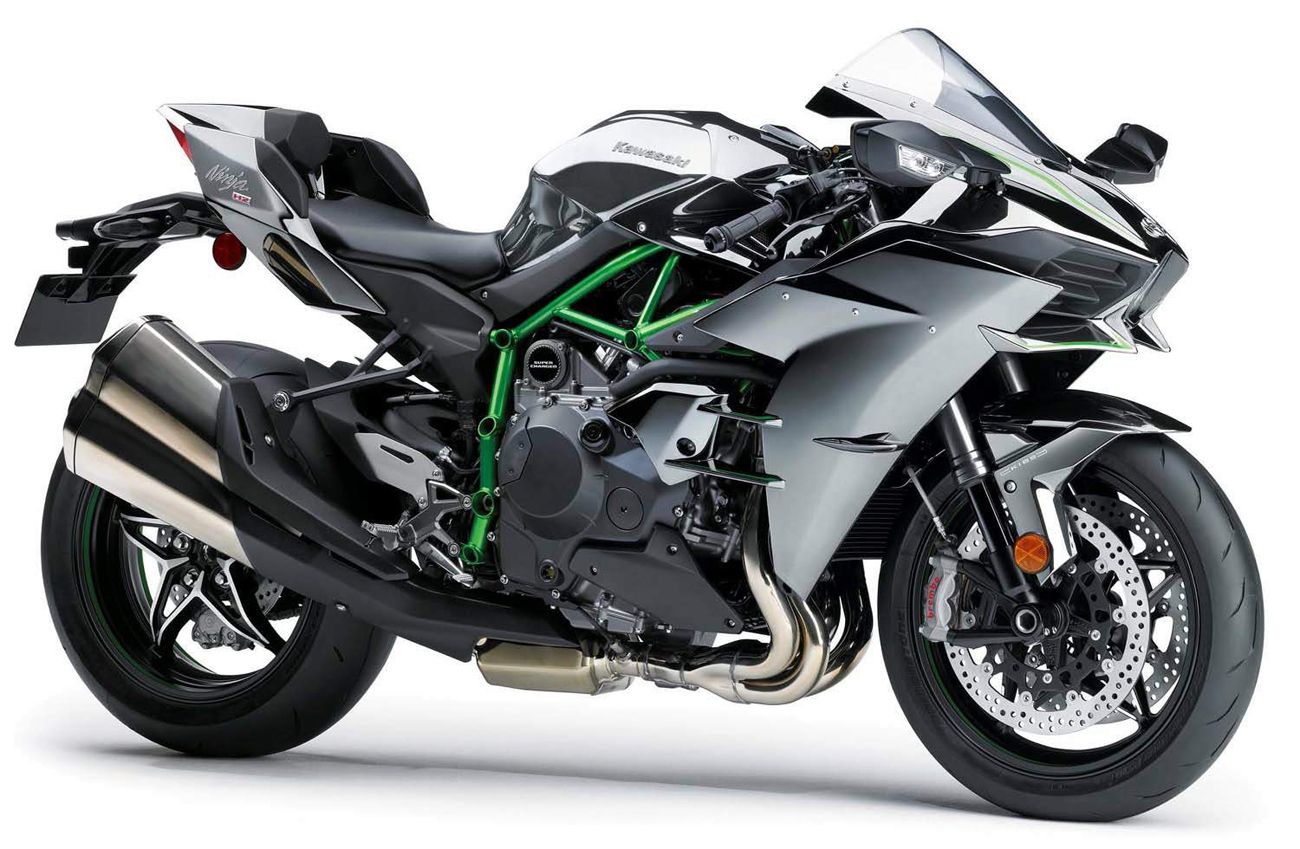Summary
- The first four-cylinder motorcycle engine was actually invented in 1905 by Belgian company FN, not in the late 60s as commonly believed.
- The Honda CB750, released in 1969, was the world's first "superbike" and revolutionized the motorcycle industry with its powerful inline-four engine and modern features.
- Kawasaki introduced the first supercharged liter-class motorcycle, the Ninja H2, in 2014, setting a new standard of power with its 228 horsepower supercharged inline-four engine.
We tend to think of the four-cylinder motorcycle engine as a modern development in motorcycling, presuming that the motorcycle engine as a concept started out as the simplest expression of then-current technology at the beginning of the 20th century and progressing from there.
However, while the vast majority of early motorcycle engines were indeed single cylinder designs, surprisingly, the first four-cylinder engine arrived not in the late 60s but in 1905, courtesy of Belgian company FN. The American manufacturers then took up the four cylinder reins up to the 30s but then, the inline four fell out of favor for road bikes for a time, while gaining increasing relevance in racing until Honda revealed its CB750 in 1969 which forced answers out of the competition.
Updated July 2023: We have updated the story with finer details and more information about the 10 most iconic inline-four engines ever produced. This is with regard to our promise of nothing but the best for our valued readers.
10 FN Four: 1905
Fabrique Nationale kickstarted its business with ammunition, but by 1901, he had set eyes on the world of motorcycle manufacturing. Another four years later in 1905, FN launched the Four--the world’s first production inline four-cylinder motorcycle. The key word is 'production' since Henry Holden had already created a boxer-four engine in 1897 that never made it to the market.
Capable of 40 mph, the FN Four was the world's fastest production motorcycle up to 1912. The engine sat longitudinally in the frame and enabled a shaft-drive system for the rear wheel. It displaced 350 cubic centimeters originally, but grew to 498cc and then 748cc. The FN Four remained in production until 1923 and inspired American motorcycle manufacturers to produce their own four-cylinder engines.
|
Manufacturer |
Fabrique Nationale |
|
Production Years |
1905-1923 |
|
Configuration |
Inline-four |
|
Displacement |
350-748cc |
|
Power |
Five horsepower |
|
Noteworthy Accolades |
World's fastest motorcycle from 1905 to 1912 |
9 Pierce Four: 1909
The Pierce Four, launched in 1909, was the first American-made inline four-cylinder motorcycle. Though 'Pierce' was initially a light engineering company, it branched out into bicycles in 1892. Then, the head of the Pierce Cycle Company decided to foray into motorcycles, traveled to Europe, and purchased an FN Four. Just as it was shipped to the States, Pierce used it as a reference for its own inline-four motorcycle.
Recognized by its use of large diameter frame tubes (that carried oil and fuel), the Pierce Four had a 696cc inline four-cylinder engine that sent power through a shaft drive. The mill was also a stressed member of the frame. Though a massive first for America, the Four failed to do the expected numbers and the Pierce Motorcycle Company went bankrupt soon after. Reportedly, just around 500 motorcycles were made.
|
Manufacturer |
Pierce Motorcycle Company |
|
Production Years |
1909-1914 |
|
Configuration |
Inline-four |
|
Displacement |
696cc |
|
Power |
Seven horsepower |
|
Noteworthy Accolades |
World's first American-made inline-four motorcycle |
8 Honda RC181: 1966
In the early 1950s, Italian bikemakers Gilera and MV Agusta were all the riot in the world of motorcycle racing. They had sophisticated engines to do the deed and there wasn't any serious challenge from their Japanese counterparts. Little did anyone know the Japanese were working day-night behind closed doors. A few years later, Honda finally had an answer - the RC181.
It boasted a 489cc, inline four-cylinder engine that developed 90 horsepower via a chain-driven transmission. The motorcycle won five out of nine races in its debut year, finishing second in the world championship and taking the constructor's championship. Next year was even better as Mike Hailwood (on the RC181) had the exact same points as the world champion Giacomo Agostini (on an MV Agusta). So the RC181 had won 10 out of the 19 races it participated in. More importantly, the RC181 was also hugely significant for what followed a few years later.
|
Manufacturer |
Honda |
|
Production Years |
1966-1967 |
|
Configuration |
Inline-four |
|
Displacement |
489cc |
|
Power |
90 horsepower |
|
Noteworthy Accolades |
Won more than half the races in its debut year |
7 Honda CB750: 1969
Come 1965, twin-cylinder motorcycles had ruled production motorcycles for decades and were starting to feel a bit out-of-date. Heck, even their makers felt complacent. So Honda took matters into its own hands and turned the world upside-down with the 1969 Honda CB750. Known as the first "superbike", the relatively simple motorcycle featured a 736cc, inline-four engine with 68 horsepower on tap. It was smooth, powerful, came with an electric starter, and immediately made everything else look old-fashioned. Reportedly, Honda made the CB keeping the American market in mind, as several interviews and market research suggested there was scope for a big bike. Safe to say all of it paid off since the bikemaker claims it made over 400,000 units of the CB750.
|
Manufacturer |
Honda |
|
Production Years |
1969-2003 |
|
Configuration |
Inline-four |
|
Displacement |
736cc |
|
Power |
68 |
|
Noteworthy Accolades |
World's first motorcycle to bear the "superbike" tag |
6 MV Agusta 750 S: 1970
Huge racing success put MV Agusta on the map and as the 60s turned into the 70s, the Italian company debuted the 750 S. The crown jewel here was a 743cc, inline-four mill that pumped out 72 horsepower. This put made it more powerful than the CB750, but the factory always preferred a high-end, exclusive approach to selling motorcycles. So only 583 units went into production, all of which cost a lot more than the Honda. Thus, instead of being in every home as it should've been, the 750 S remained a luxury only a few could afford. It's worth noting the 750 S was also MV's first motorcycle with a dedicated American flag-inspired livery.
|
Manufacturer |
MV Agusta |
|
Production Years |
1970-1975 |
|
Configuration |
Inline-four |
|
Displacement |
743cc |
|
Power |
72 |
|
Noteworthy Accolades |
Limited production makes it a highly collectible bike |
5 Kawasaki Z1: 1972
As has happened so often in Honda’s rich history, others followed its path and reaped greater rewards. Similarly, after the CB750, Honda’s Japanese rival Kawasaki started work on a similar motorcycle and birthed the 1972 Z1. Though Team Green's early aim was a 750cc mill itself, it chose to bump the capacity to 903cc post the CB750's arrival. This meant 82 horsepower, enabling a top speed of 130mph. Also, the Z1 became Japan's first motorcycle with a double overhead camshaft inline four-cylinder engine. And it kickstarted Kawasaki's iconic 'Z' moniker.
|
Manufacturer |
Kawasaki |
|
Production Years |
1972-1975 |
|
Configuration |
Inline-four |
|
Displacement |
903cc |
|
Power |
82 |
|
Noteworthy Accolades |
Japan's first DOHC inline-four motorcycle |
4 BMW K100: 1982
Throughout the 1970s, BMW persevered with its boxer twin engine. But it was clear the motorcycling scene was changing. Emissions regulations became tighter, obsession for top speed grew bigger, and four-cylinder motorcycles had never been more popular. The Bavarian giant needed to react, and react it did, although in a radical way.
It took a 987cc, inline four-cylinder engine from a Peugeot 104 and installed it flat in its motorcycle frame. This was topped by a longitudinal crankshaft on the right and the cylinder head on the left. The result? The 1982 K100. The unique configuration gave the motorcycle a lower center of gravity than normal, which, along with its 89 horsepower, meant a fun riding experience.
|
Manufacturer |
BMW |
|
Production Years |
1982-1992 |
|
Configuration |
Inline-four |
|
Displacement |
987cc |
|
Power |
89 horsepower |
|
Noteworthy Accolades |
Used a car-derived flat-four engine |
3 Yamaha R1: 1998
In the 1990s, the superbike era was in full swing. Honda led the way with the 1992 CBR900RR FireBlade, creating an unmatched light, nimble, and powerful experience. But six years later, Yamaha brewed an even better motorcycle with the same ingredients. Enter the 1998 YZF-R1. The star of the show here was Yamaha's 998cc inline four-cylinder engine with five valves per cylinder. It produced 150 horsepower (quite a lot, even by today's standards), had crisp fueling, and strong mid-range power, all of which blew the Honda into the weeds.
Another notable element was its unique transmission stacked directly behind the cylinder block. This gave the R1 an extremely short wheelbase which means the engineers could keep the weight low. It was a huge leap forward in engine design, and the reverberations can still be felt today.
|
Manufacturer |
Yamaha |
|
Production Years |
1998- |
|
Configuration |
Inline-four |
|
Displacement |
998cc |
|
Power |
150 horsepower |
|
Noteworthy Accolades |
Game changer for the liter-class segment |
2 Suzuki Hayabusa: 1999
In the mid-1990s, a top-speed war erupted between Japanese manufacturers. Honda kicked off with the CBR1100XX Super Blackbird, which achieved a top speed of 195mph. Little did anyone know, Suzuki would change the game altogether soon. Come 1999, Suzuki introduced the Hayabusa. The name meant peregrine falcon--the world's fastest bird, one that preys on blackbirds. And boy, prey it did.
Thanks to its 1299cc inline-four mill, the 'Busa became the world's fastest motorcycle at the time, recording an insane 197mph. This was so fast, it forced the European and Japanese bikemakers to form the popular 'gentleman's agreement'. Under this, the bikemakers voluntarily limited the top speed to 186mph (300kph). 25 years later, the Hayabusa is still going strong and enjoys an undeterred fan-following, even though it's no longer the fastest motorcycle out there.
|
Manufacturer |
Suzuki |
|
Production Years |
1999- |
|
Configuration |
Inline-four |
|
Displacement |
1,299cc |
|
Power |
173 horsepower |
|
Noteworthy Accolades |
World's fastest motorcycle in 1999 |
1 Kawasaki Ninja H2: 2014
What's better than a powerful inline-four engine? A supercharged one, that's what. And in 2014, Kawasaki did the unthinkable when it took the wraps off the Ninja H2. The motorcycle was the only supercharged liter-class motorcycle--a feat no bikemaker has beaten nearly a decade later. It boasted a supercharged, 998cc inline four-cylinder engine with a whopping 228 horsepower in road legal form. Or an even crazier 310 horsepower on its track-only variant, the H2R. It's worth noting the latter also recorded a top speed of 400kph (248mph) in the hands of WorldSSP champ Kenan. That said, the supercharger made the H2 longer and heavier, so it wasn't nearly as nimble as its liter bike rivals. Also, the H2 doesn't meet Euro-5 norms, so its sale is limited to a few countries. America is one of them, though.
|
Manufacturer |
Kawasaki |
|
Production Years |
2014- |
|
Configuration |
Inline-four |
|
Displacement |
Supercharged 998cc |
|
Power |
228 horsepower |
|
Noteworthy Accolades |
Only supercharged production motorcycle available on sale |

